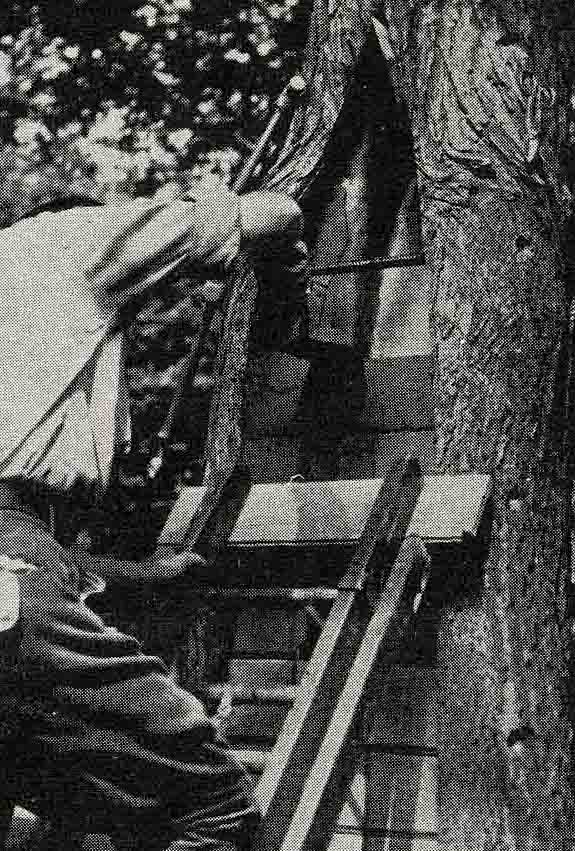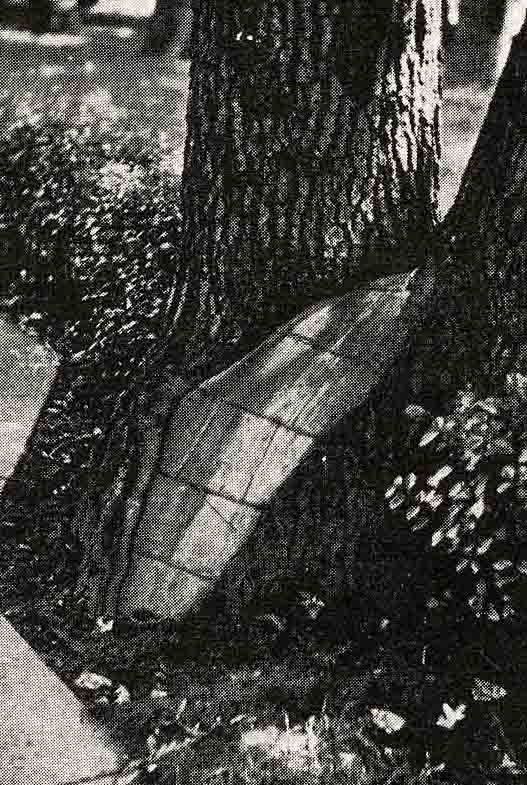I’m one of those people who can’t resist things that are free. When you pass a yard that has a ‘FREE’ sign on a rusted-out lawn mower or an old piece of exercise equipment and wonder, “Who on earth would take that home?” Uh… that would be me. Actually, I blame my dad. The Old Man’s garage was crammed full with outboard motors missing pull-cords, mismatched lawn furniture, and all manner of secondhand tools in varying states of disrepair. So my defect is genetic. Only my hyper-organized wife prevents my garage from suffering the same fate as my dad’s. But, like a blind pig finds an acorn, sometimes a scavenger finds something interesting. Recently a retiring professor in our building was cleaning out his office and put a stack of old books on a table by his door. And there was the magic word: FREE. I sifted through the stack and found my treasure; a 1948 edition of Maintenance of Shade and Ornamental Trees by Dr. P.P. Pirone. Granted, I have ready access to several modern tree care texts plus an ocean of information on the International Society of Arboriculture (ISA) website, but after thumbing through a few pages I knew this one was a keeper. The main reason the Pirone book interested me was to see how tree care has changed over the years and how things have stayed the same.
What’s changed? The most obvious example of how tree care has changed in 60-plus years is that an entire chapter of the 1948 text is devoted to cavity filling. For those not familiar with the process; cavity filling, as the name implies, is the practice of filling hollow areas in trees with concrete, just as a dentist fills a tooth cavity with amalgam or composite materials. Filling cavities in trees was once a relatively common practice. Today we recognize that filling does not stop decay and there is little value in the practice (and it certainly complicates removals). If anything, we would replace this chapter with ‘hazard tree assessment’, seeking to determine if the tree has enough solid wood to be structurally sound.

Filling a tree cavity.

The finished job
What hasn’t changed? I was surprised to see a fairly lengthy discussion of problems related to girdling roots from 60 years ago. This actually causes me to eat a little crow. I have sometimes questioned whether the current ‘epidemic’ of girdling roots is actually related to the fact that arborists and urban foresters are spending more time looking for them and have better tools (specifically air spades) for finding them. Of course, Pirone’s text also suggests that girdling roots were an issue before the advent of evil nursery production systems such as container growing. The discussion of treating girdling roots points out another change in practices. In 1948 the arborist was advised to carefully dress the wound with paint or tar. Today we generally advise against treating wounds except for situations which risk certain exposures such as if oak trees must be pruned when they are at risk for infection from oak wilt.

Girdling root removed and wound dressed.
So there you go, another book to clutter my shelf and another example of one man’s trash turning into another man’s treasure. I think Dad would have been proud.
Every time I see a photo of cavity work in a tree I think of the morbid Charles Addams cartoon that showed a man stepping away from his tree’s newly completed cavity filling, whose outline was human-shaped.
Although it’s an out of date practice, there are still arborists that will fill tree cavities. It’s always done with the intention of helping the tree, but there’s no evidence to suggest it does.
I too love old horticulture texts, the more out of date the better! I’ve been collecting them over the past three years and just love it. My favourite comes from the mid fifties, called The Australian Garden. It’s a home gardener’s manual on everything from dry stone walling to vegetable garden maintenance. The chapter on fruit tree pests is quite scary – for controlling almost every insect pest, the book recommends a thorough application of DDT. Oh dear!
Great post, Bert!
(just FYI, we set a lawnmower by the road this weekend, if you’re in the neighborhood)
I read an interesting article recently (possibly in the ISA Journal?) regarding research done in a tropical setting with cavity filling. The research focused on mosquito control using insulating foam (think: Great Stuff). It is not a firm substance but rather expands to fill the cavity and would eventually erode away and could be replaced if necessary. I recommended it to a homeowner who insisted on filling a cavity in his silver maple tree. I will have to keep an eye on it to see how it works for him.
Great post Bert! I enjoyed viewing the pictures and reading your thoughts on tree care. I love your ending paragraph! I do that all the time!
I got a 8 foot did pin oak completely hollow. Been cleaning out lbs. Of muck. Cut a door in it. Thinking about a cconcrete floor.